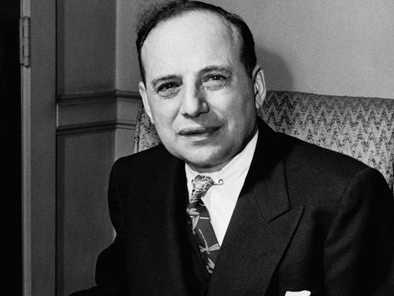
Quotes from Warren Buffett:
- “It’s far better to buy a wonderful company at a fair price than a fair company at a wonderful price.”
- “Our favourite holding period is forever.”
- “The stock market is designed to transfer money from the Active to the Patient.”
Introduction
Warren Buffett, the legendary “Oracle of Omaha,” stands as a towering figure in the world of investing. His remarkable acumen for picking winning stocks and companies has not only amassed him a fortune but also earned him the reverence of investors around the globe.
Buffett’s journey from a young boy fascinated by the world of numbers to the chairman of Berkshire Hathaway is a testament to his unyielding dedication to the principles of value investing.
At the core of Buffett’s success is his unwavering commitment to value investing—a strategy that involves picking stocks that appear undervalued in price based on their intrinsic worth. Unlike speculative investing, where short-term market trends and stock prices are the focus, Buffett’s approach is grounded in assessing the fundamental value of a company.
This methodology, deeply influenced by his mentor Benjamin Graham, hinges on the idea that the stock market may not always reflect the true value of a company based on its current financial performance and future prospects.
Buffett’s strategy revolves around investing in companies with solid fundamentals – businesses that have a durable competitive advantage, strong earnings history, and capable management.
His philosophy is simple yet profound: invest in quality companies at a price that makes sense and hold onto them for the long term. This approach, which shuns the frenetic trading habits encouraged by market volatility, has allowed Buffett to capitalize on the market’s irrationality.
The importance of value investing, as demonstrated by Buffett’s success, lies in its potential to generate sustainable and robust returns over the long term. It’s a philosophy that favours patience, thorough analysis, and a deep understanding of business economics. As we delve deeper into the nuances of Buffett’s investment philosophy, it becomes clear why he is one of the most successful investors in history.
Buffett’s Investment Philosophy
Long-Term Focus
Warren Buffett’s investment strategy is characterized by a definitive focus on long-term gains rather than short-term speculative profits. He famously stated, “Our favourite holding period is forever.”
This perspective stems from his belief that investing in a company means buying a piece of its future, not just a stock that can be traded for quick profits. By focusing on the long term, Buffett aims to benefit from the company’s growth over time, compounded by reinvested dividends and the overall expansion of the business.
Understanding Business Fundamentals
At the heart of Buffett’s approach is a profound understanding of a company’s fundamentals. He invests in businesses he comprehensively understands, often referred to as staying within one’s “circle of competence.”
This means evaluating a company’s business model for its simplicity, profitability, and durability. Buffett looks for companies with a competitive moat—unique advantages that protect them from competition, such as strong brand identity, patent protections, or significant market share.
He also scrutinizes management quality, seeking leaders who are not just capable but also honest and shareholder-oriented.
Margin of Safety

A key principle in Buffett’s philosophy is the concept of the “margin of safety” – purchasing stocks at a price lower than their intrinsic value. This concept acts as a buffer against errors in calculation or unforeseen market downturns.
Buffett insists that buying stocks below their true worth provides a safeguard against investment losses, making it a fundamental rule in his value investing approach. This strategy requires patience and discipline, as it involves waiting for opportunities when quality stocks become undervalued.
Market Fluctuations
Buffett’s view on market fluctuations is that they are an opportunity rather than a risk. He advises being “fearful when others are greedy, and greedy when others are fearful.”
This contrarian stance involves buying stocks when others are selling in fear and selling them when others are buying in greed. By doing so, he capitalizes on market irrationality. Buffett encourages investors to detach themselves from the market’s emotional rollercoaster and focus instead on the company’s actual performance and potential.
In essence, Buffett’s investment philosophy is not just about picking stocks; it’s about adopting a mindset. It’s about understanding the value, exercising patience, and having the discipline to stick to a well-thought-out investment strategy.
This philosophy has not only guided Buffett to immense success but has also provided a blueprint for countless investors seeking to build their wealth in the stock market.
Case Studies of Successful Investments
Coca-Cola

One of Warren Buffett’s most iconic investments is in Coca-Cola. Buffett’s Berkshire Hathaway bought a significant stake in the beverage company in 1988, a move that many initially questioned but has since been vindicated.
What attracted Buffett to Coca-Cola was its strong brand recognition and global reach. He recognized the company’s ability to generate consistent profits and its potential for long-term growth. Coca-Cola’s business model was simple and understandable, fitting perfectly within Buffett’s “circle of competence.”
The investment in Coca-Cola demonstrates Buffett’s philosophy of investing in companies with a durable competitive advantage. Coca-Cola’s brand, deeply ingrained in global culture, provided a moat against competition.
This decision wasn’t based on short-term market trends but on a long-term evaluation of the company’s intrinsic value and growth potential. Today, this investment remains one of Berkshire Hathaway’s most profitable, showcasing the power of long-term value investing in globally recognized brands.
American Express
Another exemplary case study of Buffett’s investment philosophy is American Express. During the 1960s, the company was embroiled in a financial scandal that caused its stock to plummet.
While most investors saw this as a red flag, Buffett viewed it as an opportunity. He recognized that the company’s core business and brand value were still strong and that the scandal was a temporary setback.
Buffett’s investment in American Express is a classic example of his approach to be “greedy when others are fearful.” He understood the company’s fundamental value and had the conviction to invest when the stock was undervalued.
This investment not only paid off handsomely as American Express recovered but also reinforced the idea that short-term market fluctuations can create opportunities for astute investors who focus on a company’s long-term value.
Apple Inc.
Buffett’s investment in Apple Inc. marked a notable shift, as he had traditionally steered clear of technology stocks due to their complex business models. However, in 2016, Berkshire Hathaway began acquiring shares in Apple, eventually becoming one of the company’s largest shareholders. Buffett was attracted to Apple’s strong brand loyalty, robust financial health, and its ecosystem of products and services.
Despite being a tech company, Apple fit into Buffett’s investment criteria: a company with a strong competitive advantage, a clear business model, and the ability to generate consistent profits. This investment underscores the adaptability of Buffett’s philosophy. It shows that while his core principles remain constant, he is open to exploring opportunities outside his traditional comfort zone when they align with his overall investment strategy.
Applying Buffett’s Strategies
For Individual Investors
Individual investors looking to emulate Warren Buffett’s investment strategies should start by focusing on the fundamentals. This includes understanding a company’s business model, its competitive advantage, and its financial health. It’s important to invest in businesses that you understand and believe in for the long term. Buffett’s philosophy encourages a patient approach, avoiding the temptation to react to short-term market fluctuations.
One key takeaway from Buffett’s approach is the importance of doing thorough research before investing. This means going beyond surface-level analysis and really understanding what makes a business tick. It’s not just about the numbers; it’s about the quality of the management, the sustainability of the business model, and the company’s potential for growth.
Risk Management
Diversification is a vital part of managing risk in an investment portfolio. While Buffett’s investments are often concentrated in a few companies, he chooses them based on their stability and long-term growth potential. For most individual investors, spreading investments across different sectors and asset classes can reduce risk.
Understanding one’s own risk tolerance is also crucial. This involves assessing how much volatility you are comfortable with in your investment portfolio and aligning your investments with your long-term financial goals. Buffett’s strategies involve investing with a margin of safety—choosing investments where the potential upside outweighs the downside. This principle can be applied by individual investors to mitigate risk while seeking long-term growth.
In conclusion, while not everyone can replicate Buffett’s success, his investment philosophy offers valuable lessons. By focusing on company fundamentals, adopting a long-term perspective, and managing risks through diversification and a clear understanding of one’s financial goals, individual investors can apply the principles of value investing to their own portfolios.
Conclusion
In reflecting on the investment wisdom of Warren Buffett, the “Oracle of Omaha,” several key principles emerge as foundational to his enduring success. His approach, grounded in value investing, emphasizes the importance of understanding a company’s fundamentals, investing with a long-term perspective, and maintaining a focus on intrinsic value rather than market speculation.
Buffett’s philosophy transcends mere stock picking; it is a testament to the power of patience, research, and conviction in one’s investment choices. By adhering to principles such as the margin of safety and capitalizing on market irrationality, he has not only accumulated wealth but also shared invaluable lessons for investors worldwide.
His approach underscores that success in investing doesn’t necessarily come from outsmarting the market, but rather from being disciplined, patient, and well-informed.
As we navigate today’s complex investment landscape, Buffett’s strategies offer a beacon for achieving sustainable long-term gains. Investors, both novice and seasoned, can benefit from adopting a value investing approach, focusing on solid businesses with enduring competitive advantages, and investing at prices that offer a margin of safety.
“Price is what you pay; value is what you get,” as Buffett famously said. This simple yet profound wisdom serves as a guide for making prudent investment decisions. In an era marked by rapid information flow and market volatility, Buffett’s investment philosophy remains a grounding force, reminding us of the fundamental principles of successful investing.
As you contemplate your own investment journey, consider the lessons from Warren Buffett. Think critically, focus on the fundamentals, and always remember that investing is most successful when it’s aligned with patience and a clear understanding of value.